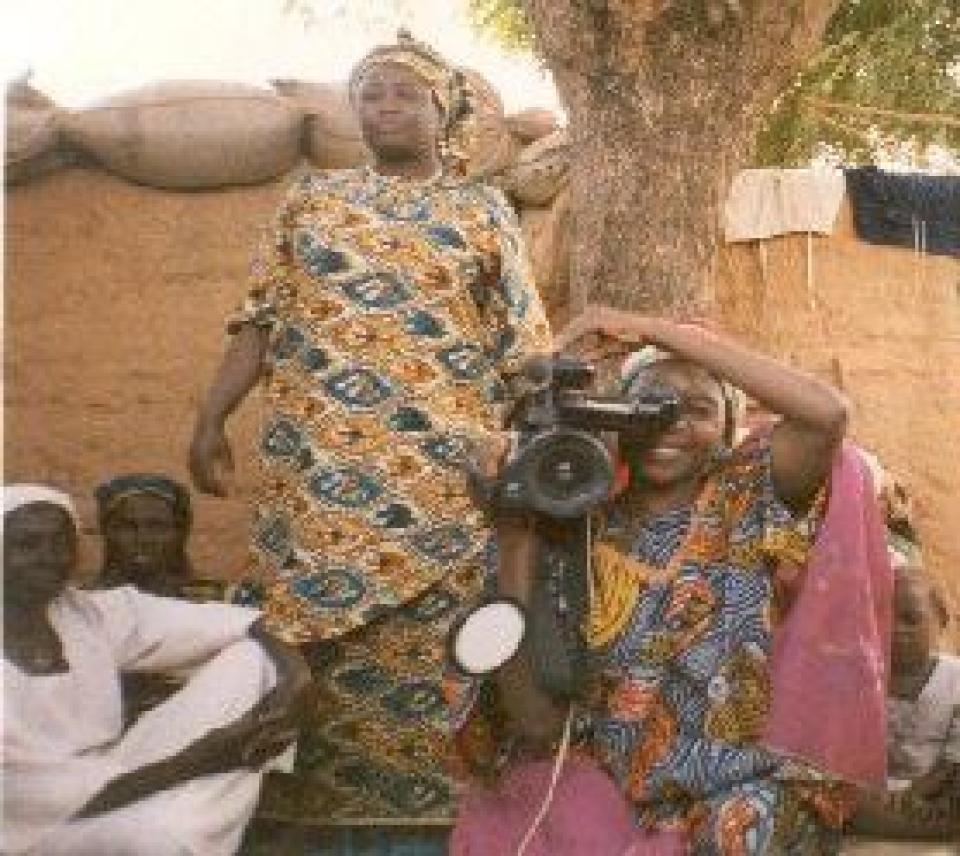
community of Africa
Garba’s presentation show cased Africa as one of the most important yet challenging areas of work for advancing gender equality in using ICTs for poverty reduction. As formal or legislated discrimination against women falls away, the key challenge confronting Africa was how to change mindsets hardened by centuries of socialisation and cemented by custom, culture and religion.
Garba’s presentation on Grassroots Economic Empowerment and ICT showed that priorities and the potential of women seem grossly undermined and limited, while the use of media especially radio for the rural women has changed the status of the women of Kano who previously were blatantly reinforced with stereotypes.
Garba said WOFAN operates in Kano a rural community of Nigeria dominated by girls married at 10 – 12 and are in many cases poor, pregnant and powerless. She said WOFAN has developed rights of women and children in Islam.
She explained that WOFAN analysed the Koran where it was observed that on reproductive rights women depended on men to interpret because most of them are illiterate and could not read. Women have now learnt the Koran and interpretation of the Koran and have since been on air presenting each right mainly on denied access to health, livelihood, governance’s capacity building and functional literacy.
Meanwhile, Paule Assumon Koki ECA consultant also shared good practices of the Enterprise Development Facilities (EDF) a technology driven initiative aimed to address the constraints faced by African women in informal small businesses which give them access to information training and business opportunities.
EDF who has developed Networks of women in many African countries has a web site where women projects, profiles, contacts etc are show cased. Koki said marketing the web site was one of the major constraints and also providing access and easy connection to members of the network.
Rural women and ICT
In the rural areas where the majority of the world’s hungry live, women and girls produce most of the food consumed locally. Their contribution could be far greater if they had equal access to essential resources and services, including information.
Rural women have even less access to information and new technologies than men and thus at an advantage when it comes to making informed choices about what to produce and how best to market their products. Lack of information also limits their influence in their communities and their ability to participate in decision-making.
Unless researchers and policymakers give due attention to gender and unless women have a voice in developing available opportunities, the new technologies could serve merely to exacerbate existing inequalities.
Rural radio: convergence of new and traditional technologies
For millions of people in rural Africa, radio is the most accessible, economical and popular means of communication. Radio stations targeting the rural communities need to be set up in addition to training broadcasters in reporting on the use of ICTs. In addition these radio stations need to be provided with fact sheets on food security issues, weather, post-harvest operations, and early warning systems and nutrition.
There is also need for radio stations to be connected to the Internet and train broadcasters to collect and adapt information for their programmes.
According to the Food Agriculture Organisation (FAO), Martin Ole Sago, a rural broadcaster in Tanzania, has neither a computer nor a phone. But he drives more than 100 Km each week to Arusha to log on and gather information for his listeners. “We must bring food security information to the grassroots, to the people who need it,” he says.
Rural or remote areas exhibit one or more of the following characteristics: scarcity or absence of public facilities such as reliable electricity supply, water, access roads and regular transport. Scarcity of technical personnel; difficulty topographical conditions e.g. lakes, rivers, hills, mountains or deserts, which render the construction of wire telecommunication networks very costly, severe climatic conditions that make critical demands on the equipment.
Low level of economic activity mainly based on agriculture, fishing, handcrafts, etc
Low capita income underdeveloped social infrastructures (health, education etc) low population density, very high calling rates per telephone, reflecting the scarcity or telephone services and the fact that large numbers of people rely on a single telephone line.
These characteristics make it difficult to provide public telecommunication services of acceptable quality by traditional means at affordable prices, while also achieving commercial viability for the service provider.
Internet is also on the other hand mostly widely used platform adopted to deliver multimedia applications in rural areas of developing countries. While much negative attention in developing countries has been focused on the use of the Internet as an illegal by pass mechanism in the international traffic arena, the long term importance of the Internet for developing countries lies in its potential to improve the domestic flow of economic and educational resources between isolated rural communities and urban centres. Areas of application for Internet and other communication based application include tele-medicine and public health education, coordinating regional food security efforts, making governments sponsored agricultural extension services more effective and accessible to rural farmers, and enabling more rural children, adolescents and post secondary students to receive an education among others.
The need for basic literacy, computer skills and training in the use of ICT applications remains a significant challenge for rural areas. Language barriers and the complexity of Personal Computer (PC) operation have shown to hinder Internet diffusion. Many innovative skills have been devised in rural areas to over come these barriers. Although not widely utilised, techniques such as voice mail, translation of content, and icon based telephones illiteracy are not necessarily barriers to the use of communication needs are comprehended and addressed. Relevant content is extremely critical to the success of any rural application.
Responses to this post
well the article......is a good one.....Its a one sided article.The views from the women in question are missing...I think we should run away from measuring issues just from the writers points of view. ICT breaks sharia law...to me is not true.
In reply to ICT....breaks sharia law by Brenda Zulu (not verified)
However, can I clarify that Sharia is all about complying with the teachings of the Qur'an and the Practices of the Holy prophet which is called the Hadith. Non- compliance with Sharia the way it is in the holy books is why women are deprived of their rights and bringing so much injustice. If the teachings of the Holy books are adhered to, there would be little or no poverty, and women will not be relegated to the background. As such we are concentizing the women and the general public including the religious and traditional leaders to be mindful of the rights of women and children. These rights happen to be very similar to the human rights issues.
I wish and prayer is that one day, Sharia will bring peace, and so much understanding enabling women walk towards freedom and equality where humanity is assured.
On the article being one sided, it was not possible for me to add voices of the women invoved in the project because the article was done in Accra, Ghana during the World Summit on Information Society (WSIS) Africa.
In the article i tried to bring out issues on ICTs and poverty in Africa's rural and how it affect women. Also it should be noted here that the article says that ICT....breaks Sharia compliances and not law as quoted in the other comment.
What do other people think?
The article about iequalities is excellent reading material.To implement, the same, rural and or local community leaders should organise training camps on women's role in the society and the contribution they could provide the society. This will be a direct upliftment of the women in general in the society.
- Add new comment
- 8820 views






Add new comment